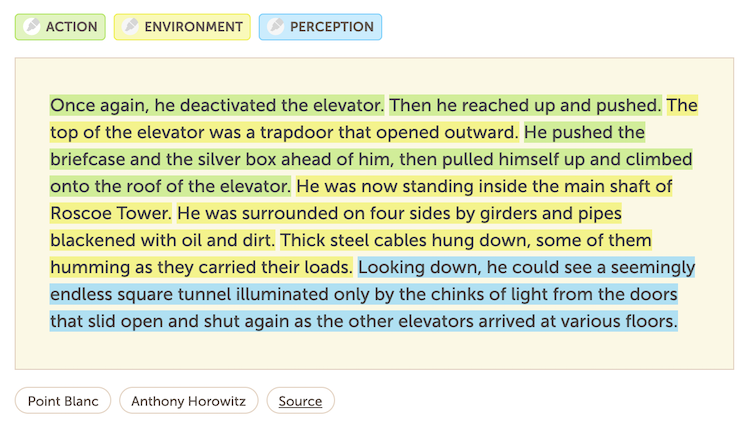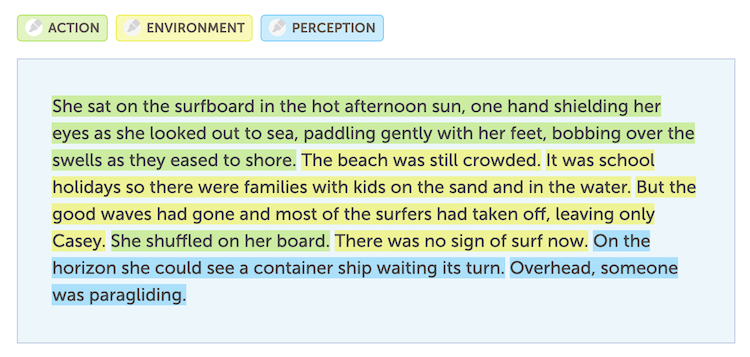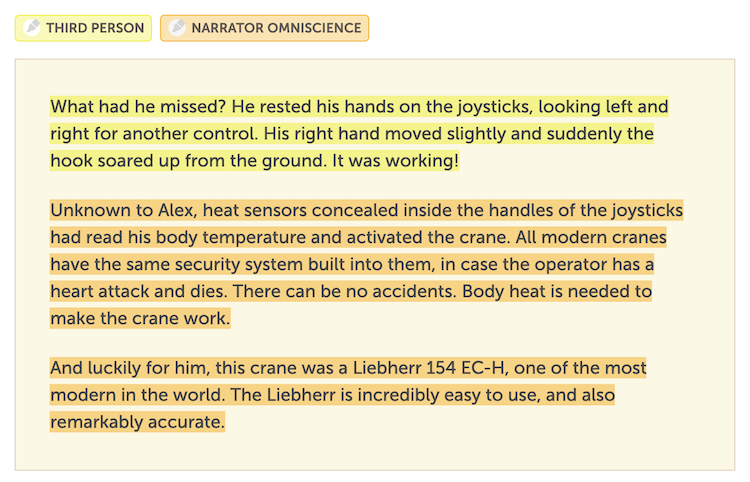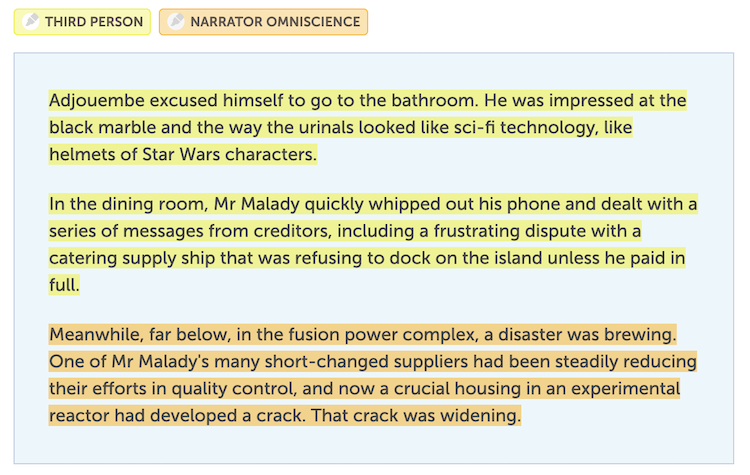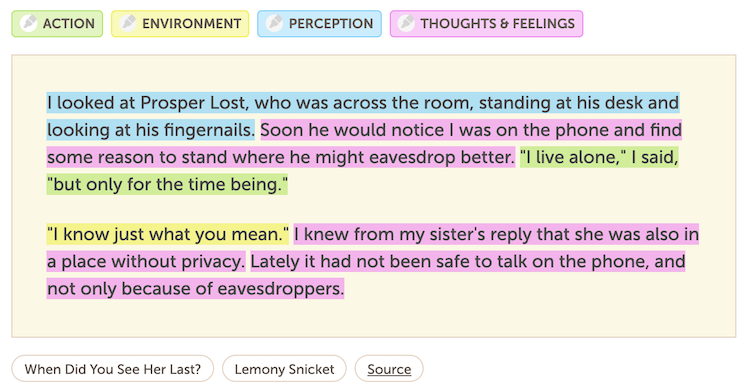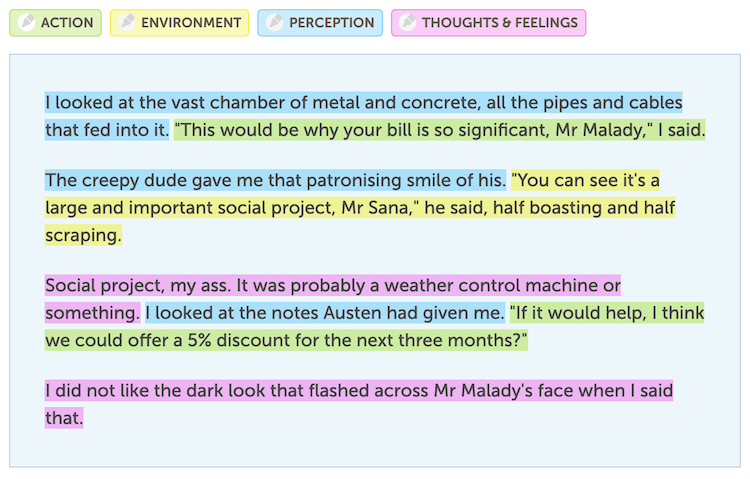New lesson on Point of View in narrative
Last week we published a lesson on Change, cause & effect to wrap up our cluster of lessons on causality in narrative. This week we're getting into subjectivity, starting with Point of view.
This is one of the most requested topics in the Browse survey, so we're glad to finally be tackling it!
Three types of people involved in a story
There's more to point of view than just choices about pronouns; it's fundamentally about epistemology.
So our lesson starts with the observation that there are three entities involved in any story:
- Audience
- Narrator
- Characters
Point of view is concerned with who knows what in this triangle, and shifts in the relationship between these entities are what create different points of view.
Third person (including limited, objective, subjective, and alternating)
We use snippets from middle years texts such as Point Blanc, The Book of Lies, and So Done to explore how third person balances all three players, with the narrator acting as go-between reporting the actions of the characters to the audience.
We unpack some of the implications of this relationship, such as the narrator's perception being limited to whatever the point of view character can perceive:
We introduce the idea that one feature of third person is that it allows room for contrasting narrator and character perspectives—a concept we'll develop in the next lesson.
Third person (omniscient)
With third person omniscient we can use our three-entity model to show how the narrator splits away from an individual point of view character until they can take an essentially godlike perspective.
This can not only provide access to all characters' actions and thoughts, but also wider social, historical, and thematic context that none of the characters know:
We also note how in some texts the narrator's omniscience can expand to include an awareness and acknowledgment of the audience.
Second and first person
Having spent much of the lesson exploring variations on third person (limited, objective, subjective, omniscient) we can then boil second and first person down to the most important difference, which is the change in relationship between narrator, character, and audience.
We show how second person is the narrator trying to convince the audience that they, the audience, are the point of view character—which can create a self-conscious and reflective mood, or can come off as creepy and controlling.
And we show how first person is the narrator trying to convince the audience that they, the narrator, are the point of view character:
We discuss how first person makes a story all about subjective experience, with everything filtered through the point of view character's voice and values.
And we introduce the idea that the possibility of a contrasting perspective from a third person narrator has been lost—another theme to be continued up in the next lesson.
To conclude the lesson, students select their favourite 3 responses, which go as a set into Wrotevote or Peer Review.
Summing up
Point of view is a complex topic and this lesson only scratches the surface, but we've tried to use the relationship-triangle model to help students quickly make sense of the possible permutations, as well as explain why you might choose one point of view over another.
You can preview the Point of view lesson here.
What's up next in Writelike lessons?
The clauses and complex sentences lesson got too big and finally split in two. The first lesson on the components of a clause should be out in the next week or so.
On the narrative front, the next lesson will deal the role of valuing and judgment in narrative, and how that intersects with point of view and the ability for narrators and characters to have different opinions.

